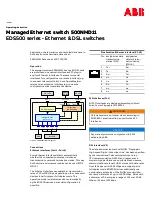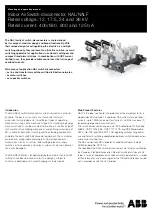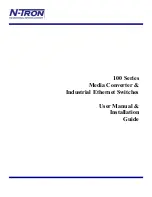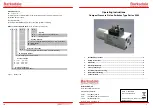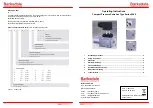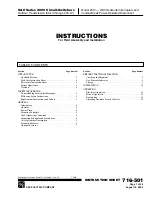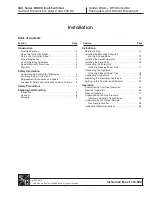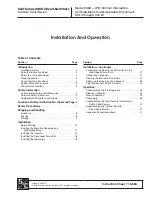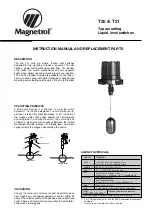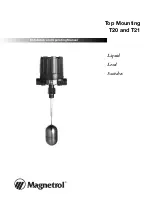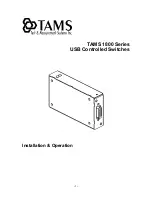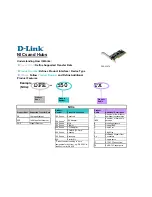
4
067226 HD/HC/HS4658
L/N/NT4658N
574048
574098 AM5658
If the device is installed in a My Home system it can be configured in two ways:
- PHYSICAL CONFIGURATION, inserting the configurators in position.
- Configuration via MYHOME_Suite software package, downloadable from
www.homesystems-legrandgroup.com; this mode has the advantage of offering many
more options than the physical configuration.
For a list of the procedures and their meanings, please refer to the instructions in
this sheet and to the "Function Descriptions" help section in the
MYHOME_Suite software package.
The sensor parameters are defined by 6 configurator sockets and the functions depend on the operating mode:
Local: A = 1 – 9
Light point: PL = 1 – 9
Mode: M = 0 – 4
2. My Home system
3. Physical configuration
Available functions
Configurator mode
The sensor controls the light unit, the address of which defined in A and PL. When a movement is detected, and if the measured brightness is below
the configured value, the system switches on the specified light unit and keeps it on until the expiry of the period configured using the configurator on
T (automatic mode). The Sensitivity of the PIR movement detector is configured using the configurator on S. For appropriate operation, the sensitivity
of the light sensor must be configured using the configurator on D. If a user manually switches off the lights, a control action can be used to disable the
movement detector until a movement is detected, for a period set by T.
0
In this mode, the sensor only works based on the light conditions, and the movement sensor is disabled. When the brightness falls below the threshold
configured, the system switches on the light unit, switching it off again when the brightness exceeds the set threshold (automatic mode). Configure A = 1
-9 and PL = 1 - 9, configurators GEN, AMB and GR cannot be connected. In this mode, configurators S and T are not connected.
1
In this mode the sensor does not manage the lights directly, but sends movement and brightness signals to the scenario programmer MH200N. In this
case, the sensor address is entered in A and PL and must be unique inside the system. Therefore it is not possible to connect configurators GEN, AMB, and
GR. In this mode the S and T configurators are not connected because these parameters are directly managed by the scenario programmer.
2
In this mode the system directly manages a light unit, ensuring a consistent brightness level inside the room (this mode is only effective if the sensor manages
the dimmer). The system switches the lights on when a movement is detected and keeps them on based on the presence of people and the lighting threshold
configured (automatic mode). When a movement is detected, and if the measured brightness is below the configured threshold, the sensor switches the
specified light unit on and keeps it on until the expiry of the period configured using the configurator on T. During operation, the sensor keeps a constant
brightness level, depending on the configurator on D. For example, when the brightness of the natural light increases, the sensor reduces the brightness of the
light unit controlled. For appropriate operation, the brightness sensitivity threshold of the sensor must be configured using the D configurator. The threshold
value can be modified using a brightness control. The new value is then configured as the new sensor threshold, until the next activation.
3
In this mode, the sensor only operates on the basis of the brightness conditions, and directly manages a light unit to ensure a constant brightness level
inside the room (this mode is only effective if the sensor manages the dimmer). The movement sensor is disabled. The lights are manually switched on,
and automatically switched off by the sensor, based on the configured brightness threshold (eco mode). Therefore, when the lights are off, the sensor
does not switch them on; but it waits for the user to switch them on manually. During operation, the sensor keeps a constant brightness level, depending
on the configurator on D. For example, when the brightness of the natural light increases, the sensor reduces the brightness of the light unit controlled.
When the lights are off, if the level of natural light decreases, the sensor does not switch them on, but it waits for the user to switch them on manually.
For appropriate operation, the brightness sensitivity threshold of the sensor must be configured using the D configurator. The threshold value can be
modified using a brightness control. The new value is then configured as the new sensor threshold, until the next activation.
4
Sensitivity of the movement sensor: S = 0 – 3
Control timer: T = 0 – 9
Sensitivity of the lights sensor: D = 0 – 5
Warning: the addresses A = 0 and PL = 0 do not exist
Warning:
To manage scenarios using the sensor signals, via the MH200N scenario programmer, the sensor must be configured in Mode 2.
PIR+US flush-mounted SCS Green Switch
MQ00473-f-EN
09/06/2014
When installed in a Lighting Management system, the device can be configured in the
following ways:
- Plug & Go: automatic procedure for pairing devices connected to the inputs and outputs.
The procedure is activated on powering the device. It is only available for Room Control-
lers or, in the case of other devices, paired with the Room Controllers.
- Push & Learn: procedure for pairing different connected devices or changing the assign-
ments defined automatically in the Plug & Go procedure. For more details, please refer
to the specific document.
- Software Configuration: using the Virtual Configurator software; for more details, please
refer to the specific manual.
1. Lighting Management System
Configuration






